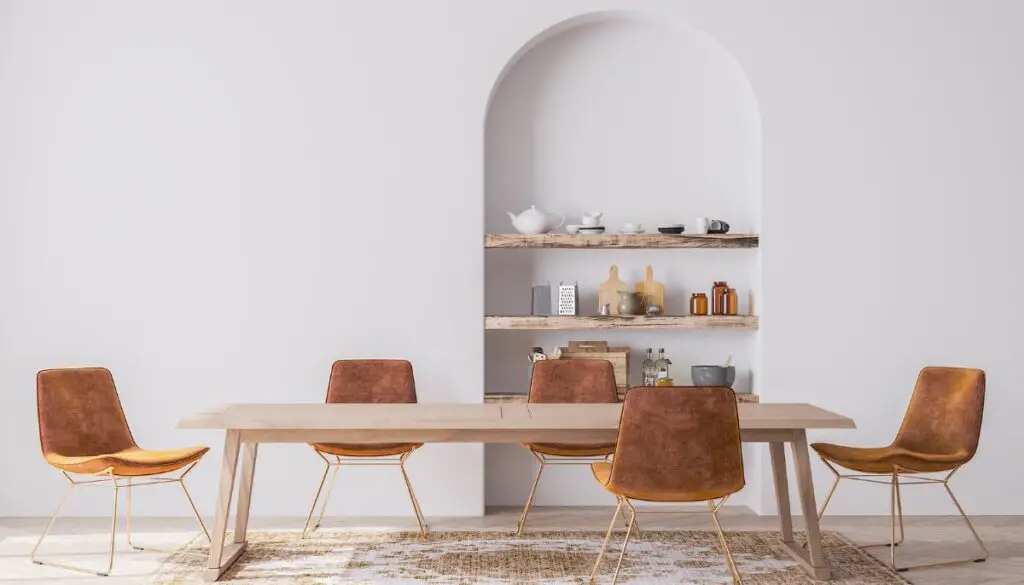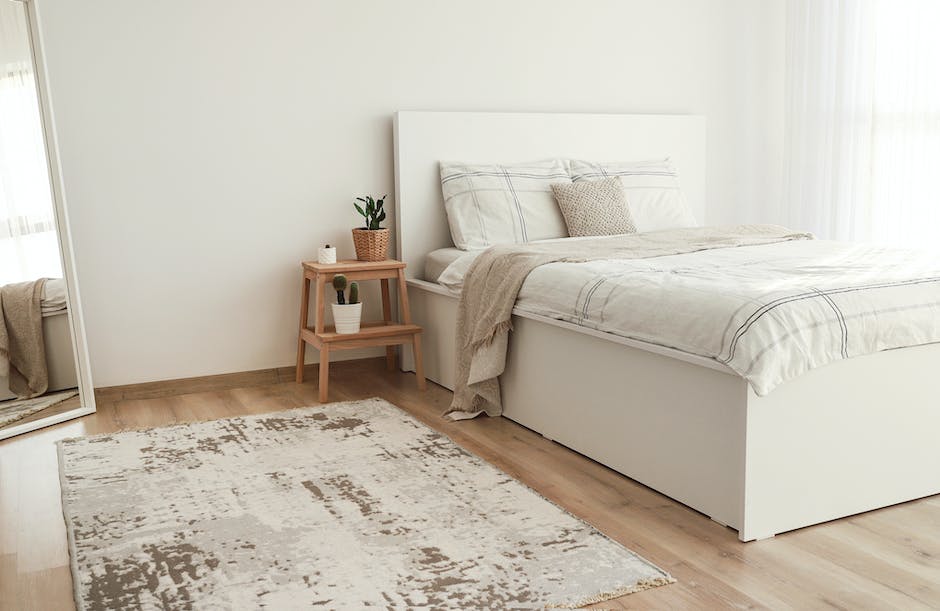The Scandinavian design ethos, steeped in a rich history and characterized by a blend of simplicity, minimalism, and functionality, offers a refreshing approach to interior design. Traced back to the Nordic regions in the mid-20th century, it aims to strike a unique aesthetic balance that harmoniously marries modern and traditional elements.

Furthermore, its emphasis on neutral palettes, natural materials, and a luminous aesthetic create serene and inviting living spaces, reflecting a lifestyle that values comfort, practicality, and understated beauty. This easeful, less-is-more ethos is not merely a design trend, but a way of life, offering insights into the charm of Scandinavian design and its application in home interiors.
Understanding the Basics of Scandinavian Design
Origins and Principles of Scandinavian Design
Scandinavian design has its roots in the early 20th century Innovators from Norway, Denmark, Sweden, Finland, and Iceland. These innovators believed in creating products that were beautiful, functional, and accessible to everyone. To fulfill their vision, they combined traditional craftsmanship with modern manufacturing techniques, leading to the iconic design style known today as ‘Scandinavian Design’. This fundamental belief in combining aesthetics and practical functionalities still survives in contemporary Scandinavian design, emphasizing minimalism, simplicity, and the efficient use of space.
Characteristic Simplicity and Minimalism
When envisioning Scandinavian design, the images that come to mind are white walls, clean lines, natural lighting, and minimalist furniture. The utilitarian philosophy, grounded in the Nordic region’s cold and challenging landscape, forms the core approach of this design ethos. The result is a design sensibility that is both visually appealing and highly functional, making for very liveable spaces, with each item serving a purpose. This characteristic simplicity and minimalism in Scandinavian design meet the needs of fast-paced modern lives, where clutter is often seen as a distraction and a source of stress.

Neutral Colors and Natural Materials
Scandinavian design is well-known for the use of neutral colors and natural materials. These design elements are seen as integral to creating a sense of calm, tranquility, and harmony with the environment. The palette is often comprised of whites, grays, blacks, and browns, with occasional pops of color for added interest. The use of natural materials, such as wood, is also prevalent. This focus on nature-infused materials helps to foster a sense of warmth and coziness, countering the cold, dark winters typical of the region.
Use of Light
Another significant aspect of Scandinavian design is the clever use of natural light to create bright and airy interiors. Owing to the Nordic region’s extended periods of darkness, Scandinavian designers prioritize maximizing natural light in their designs. You will often find large windows, light reflective surfaces, and minimal window treatments to allow for as much light as possible.

Aesthetic Balance: Modern vs. Traditional
What sets Scandinavian design apart is its delicate balance between modern and traditional elements. While rooted in traditional craftsmanship, it has always been forward-looking, adapting to changing trends without losing its essence. The use of modern appliances and technologies blend seamlessly with traditional elements such as wooden floors, fireplaces, and classic furniture designs. The blend of these aspects creates visually striking homes that are comfortable, functional, and aesthetically pleasing.
Scandinavian House Design
When it comes to Scandinavian House Design, the concept transitions into creating warm, inviting homes that are clutter-free, peaceful, and functional. Space is smartly utilized to make the home look bigger, with storage being subtly integrated into the design to maintain the neat minimalist look. One consistent theme is the conversation around hygge, a Danish concept translating into comfort and contentment, highlighting the overall goal of these designs – to create comfortable living spaces that instill a sense of peace and happiness.

A household name in the realm of interior design, Scandinavian style reigns supreme for its unique blend of easy simplicity, practical design elements, and a balance of traditional and contemporary aesthetics. Discarding an overly decorated and confused approach, Scandinavian design ushers in retreat-like living spaces that are not just stunning to look at, but also perfectly crafted for day-to-day living.
Scandinavian Interior Design Elements
Diving Deeper into Scandinavian Design Elements
Steeped in simplicity, minimal interpretation, and functionality, Scandinavian interior design has its roots firmly grounded in Nordic countries since the mid-20th century. This design style is renowned for its clean, uncomplicated lines, a color palette awash with white and softened hues, and loving incorporation of natural elements like wood and leather that add warmth and texture to the spaces.
White and Pastel Colors
White and pastel colors are a key feature in Scandinavian interior design. These colors not only brighten up the space, they also give it a sense of serene calm. The use of these light, muted colors is practical too as they help to maximize the natural light that is often scarce in the Scandinavian region due to long winters and short days.

Clean Lines
Clean lines in furniture and architecture are another distinctive characteristic. In line with the minimalist philosophy, Scandinavians prefer furniture that is simple, functional, and free from needless ornamentation. Scandinavian-designed furniture often exhibits a blend of organic forms and engineered precision — a nod to the regions industrial heritage.
Natural Lighting
Natural lighting is another critical aspect of Scandinavian design. With long, harsh winters and relatively short days, maximizing natural light is essential. This is achieved through large windows, skylights, and an open floor plan that allows light to flow freely through the home.
Open Spaces
The principle of open spaces in Scandinavian design is essential for creating a tranquil, spacious environment. The layout generally avoids clutter, promoting a sense of calm and simplicity. This also helps maximize light penetration into the space, creating a bright and inviting atmosphere.
Furniture
In terms of furniture, Scandinavian design often relies on style and comfort. The furniture is typically designed with sleek lines and earthy tones, emphasizing functionality without compromising comfort.
Materials
Popular materials used in Scandinavian design include natural wood for furniture and floors, wool and cotton for textiles, and metals such as stainless steel and copper for fixtures and fittings.
Textiles
Scandinavian design does not shy away from textiles. Traditional Nordic patterns add interest and warmth to a minimalist space, with natural fabrics such as wool and linen being common choices.
‘Hygge’
One unique aspect that truly captures the essence of Scandinavian interiors, however, is the concept of ‘hygge’. Translated loosely as ‘cosiness’, ‘hygge’ emphasizes creating a warm atmosphere in the home where people can enjoy the simple and good things in life. Therefore, elements such as candles, plush cushions, and inviting throws are often incorporated into the design.

Principles of Scandinavian Design
Scandinavian design primarily focuses on functionality. This style of design emphasizes the efficient use of space and a minimalist approach to decor, concentrating on essential furniture pieces. Each feature serves a meaningful purpose whilst simultaneously enhancing the overall aesthetics of the space.

Practical Application of Scandinavian Design
Selection of Scandinavian Furniture
Incorporating the right blend of Scandinavian furniture is pivotal for achieving this design. This furniture carries the hallmarks of clean lines and simplistic beauty. Typically, light-colored woods such as pine, birch, and ash are used in their production. The furniture is not just about aesthetics, but also designed to maximize space, durability, and product craftsmanship. A common feature is multipurpose furniture, like a sofa that can also function as a pull-out bed.
Scandinavian Color Schemes
Scandinavian design is notable for its calming, neutral color palette. Soft hues of whites, grays, and browns are dominating colors, providing a backdrop that inspires calmness and tranquility. These understated colors also help to brighten rooms during dark, winter months, which is an essential aspect of this design style. Pops of color can be added through accessories and art to break the monotony and add an element of personal taste. To learn more about paint colours, check out Pastel Paint Color Trends 2024: What To Expect
Planning and Utilizing Space
Similar to the furniture, Scandinavian design is deeply ingrained with a notion of functionality when it comes to space planning. The idea is to let the room breathe and not let it get overtly filled up. This style of design craves open floor plans and emphasizes a more spacious layout. It is also not unusual to find multi-functional rooms as a common design approach.
Incorporation of Natural Elements
Nature and the outdoors are significant aspects of Scandinavian culture and lifestyle, and it’s reflected prominently in their interior design principles. Therefore, utilizing natural elements is a must. It includes wooden surfaces, plants, and maximizing natural light. Windows are left unadorned or minimally dressed to allow as much natural light as possible. Fireplaces are another characteristic staple, contributing both to the homeliness and functionality by providing warmth.
Balancing Minimalism and Homeliness
Scandinavian design sits delicately on the precipice between minimalism and homeliness, achieving a perfect balance. This balance can be best maintained by keeping clutter to a minimum and prioritizing functionality in every design element. However, maintaining a homely atmosphere requires some color, texture, and personal memorabilia on display. You can achieve this by putting up family photographs, placing warm carpets on wooden floors, or adding colorful cushions on your minimalistic sofa.
Real Life Examples for Inspiration
One excellent real-life example of Scandinavian design is the home of famous Swedish blogger and photographer, Amelia Widell. Her apartment in Stockholm beautifully exemplifies the essence of Scandinavian design. The space is light and airy, filled with vintage finds, soft hues, and personal touches.

Another beautiful example is the Copenhagen home of graphic designer, Tanja Vibe. Her minimalist home features an all-white palette, with pops of color and texture provided by plants and artwork. Each item in her house serves a purpose, thus adhering beautifully to the fundamental principle of Scandinavian design.

Embracing the principles of Scandinavian design holds the possibility of transforming one’s home into a stress-free sanctuary that exudes tranquility and beauty, while also achieving a high level of functionality. Through careful furniture selection, color considerations, and mindful space planning – all the while keeping in tune with nature, one can realize this aesthetic in their own homes.
The aim is not only to create a visually pleasing environment, but also one where every object holds a purpose and contributes to the overall comfort and wellbeing of the inhabitants. Thus, with its enduring allure, Scandinavian design brings forth innovations and aesthetics that go beyond mere style, reflecting a mindset to simplify, organize, and live better.








Leave a Reply